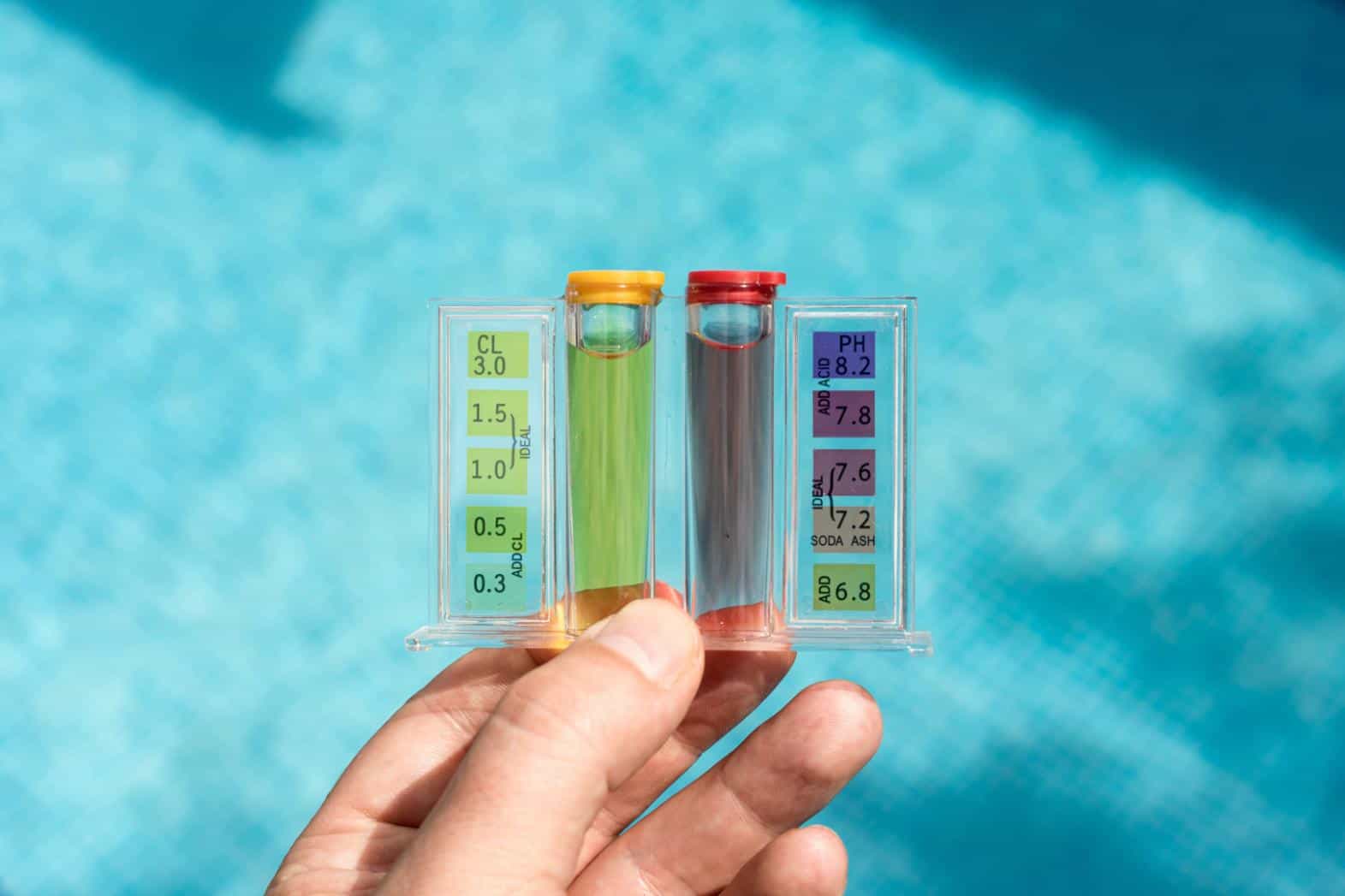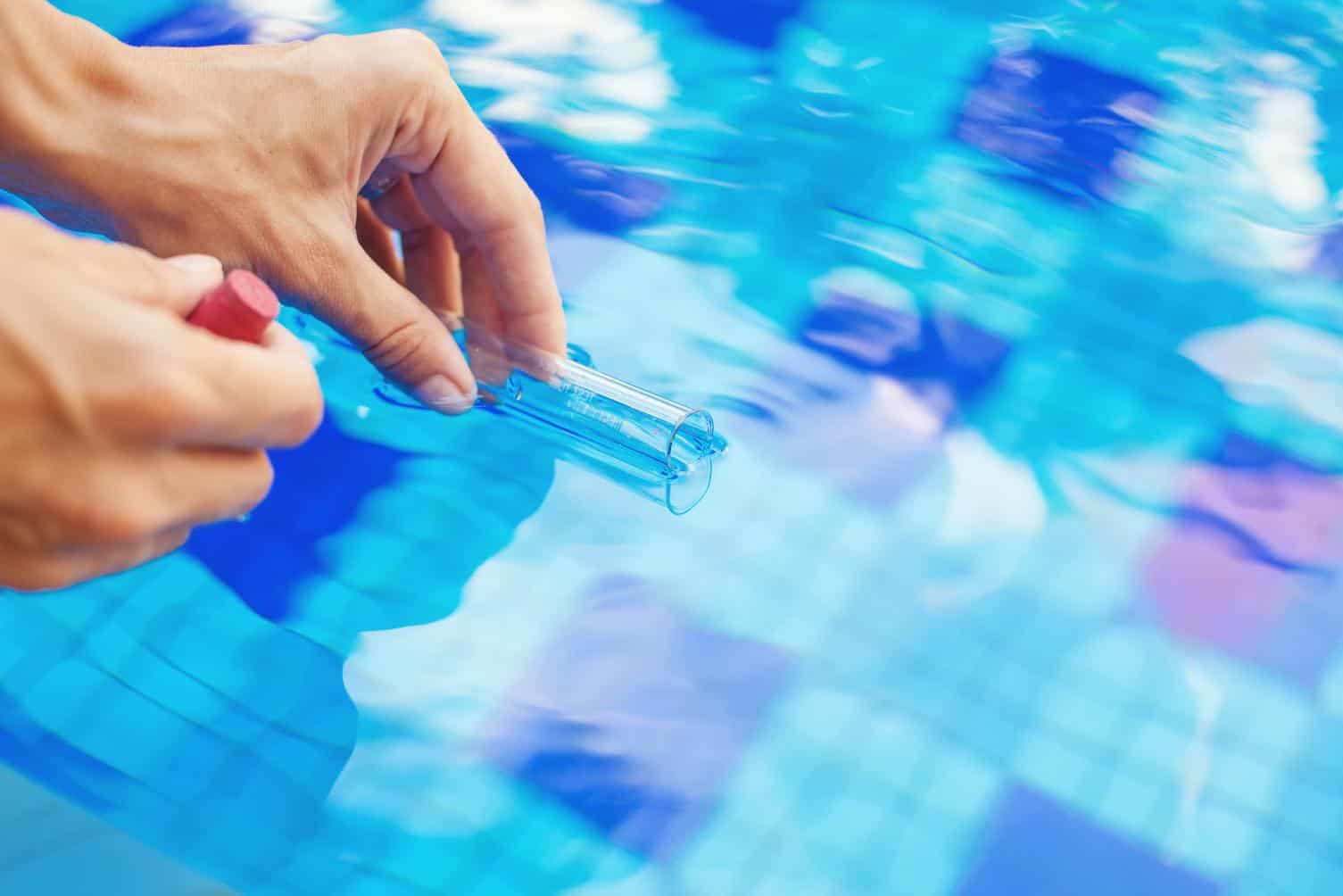Signs of Low and High pH and How to Maintain Optimal pH in a Pool
If you own a swimming pool, one of the most important aspects of regular upkeep is water chemistry. Understanding how to manage pool pH helps protect your investment, improves swimmer comfort, and extends the life of pool equipment. This article will discuss what you need to know about keeping your pool’s pH levels in check and how a pool maintenance company like Pools & Courts can help.

Why a Balanced pH in a Swimming Pool Matters
A properly balanced pH is essential for safe and efficient swimming pool operation. When the pool pH is too low or too high, it can compromise sanitation, damage equipment, and cause discomfort for swimmers. Consistent pH monitoring and maintenance prevent long-term issues and make pool ownership less stressful.
Understanding Pool pH
The pH is an indicator of how acidic or basic (alkaline) the water is. For swimming pools, the ideal pH range is between 7.2 and 7.8, with 7.4 being the target or optimal value. Staying within this range maximizes chlorine effectiveness, reduces scale buildup and corrosion, and prevents algae growth. An optimal pH keeps swimmers’ skin and eyes comfortable. Low pool pH is too acidic and can cause stinging eyes and skin irritation, while high pH is too alkaline and can lead to eye and skin irritation as well as itchy, dry skin and brittle hair.
Rain, chemicals added, the number of swimmers in the pool, and their sweat and sunscreen can all affect the pool’s pH level. Low or high pH can interfere with other pool chemicals, damage surfaces, and affect the efficiency of filters and pumps.
What Causes High pH in Pool Water and How to Lower It
Several factors contribute to rising pH levels, especially in Saudi Arabia’s hot, arid climate. Common causes include high evaporation rates, especially in summer. The use of alkaline sanitizers like calcium hypochlorite, algae treatments, or shock dosing can raise pH levels. Excessive use of water features or fountains that aerate the water can also cause high pH, which can cause scaling and cloudiness.
If your water pH is too high, here’s how to lower it safely:
- Test the water using a liquid test kit or digital tester to confirm the pH level is above 7.6.
- Calculate the dosage or amount of acid needed based on the pool volume. Most pool owners use muriatic acid or sodium bisulfate (dry acid).
- Add acid safely by wearing protective gear, diluting muriatic acid in water, and pouring slowly into the deep end with the pump running.
- Let the water circulate for 2 to 4 hours before retesting. Adjust further only if necessary.
Tip: Avoid adding large amounts of acid all at once, as this can damage your pool lining or filtration equipment.
What are Signs of Low PH in Pool Water and How to Raise It
Recognizing the signs of low pH in pool water helps you act before problems escalate. Common indicators include rapid chlorine depletion, irritated eyes, and dry, itchy skin after swimming. Corrosion of ladders, lights, and metal fittings, as well as cracks or etching in plaster or vinyl liners, are also signs of pool water with low pH, which can lead to expensive repairs if ignored for too long.
If your pool pH is low, you need to raise it gradually. Here’s how:
- Test the water using a reliable pH kit or digital meter.
- Add sodium carbonate (soda ash) or sodium bicarbonate (baking soda) in small doses according to the pool volume.
- Wait a few hours and test again before adding more, following the manufacturer’s instructions. Allow for circulation before retesting.
- Aerate the pool if needed to stabilize levels.
Tip: Overcorrection with too many chemicals can cause instability. It’s best to raise pH incrementally and retest until optimal levels are restored.
Maintenance Tips to Keep pH Balanced

To keep pH levels steady, you need a regular maintenance plan:
- Test the water at least twice per week, or more frequently during heavy use or extreme weather conditions.
- Use a reliable pool water tester, such as test strips or a liquid test kit, to measure pH.
- Monitor chlorine levels and total alkalinity, as both affect pH stability.
- Use pool covers to reduce evaporation and contamination.
- Clean filters regularly to support balanced water flow.
- Schedule monthly service visits for full water chemistry checks.
Why Choose Pools & Courts for Pool Water Maintenance
Pools & Courts is a trusted name in Saudi Arabia for building and maintaining high-performance pools. We bring decades of experience in managing pool water chemistry in demanding climates. We offer accurate chemical testing using professional-grade tools, scheduled visits that include complete pH monitoring and adjustment, and equipment inspection to prevent pH-related corrosion.
If you own a residential pool or manage a commercial facility, we offer maintenance services designed for long-term performance. Contact us for a quote today.
Reference:
Swimming Pools – Water Quality. Retrieved on 21 July 2025 from: https://www.betterhealth.vic.gov.au/

